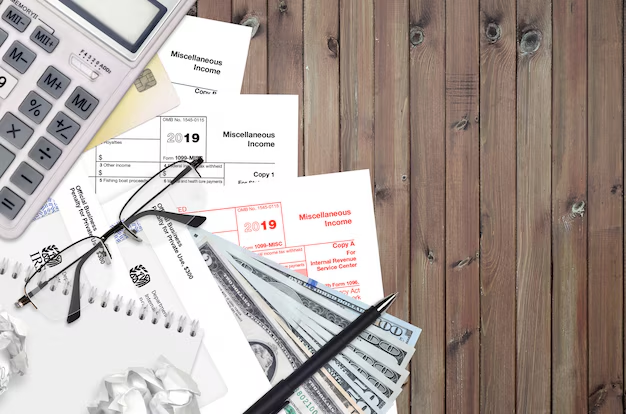Where to Send Your 1040 Tax Return: Navigating the Process with Ease
Tax season often brings a flurry of questions and concerns, especially when it comes to filing and sending your 1040 tax return. Whether you're a seasoned taxpayer or filing for the first time, the process of ensuring your tax return ends up in the right hands can seem daunting. This comprehensive guide will clear away the confusion surrounding where to send your 1040 tax return and offer practical insights to make the entire process smoother.
Understanding the Basics: What Is a 1040 Tax Return?
The Form 1040, commonly known as the U.S. Individual Income Tax Return, is a standard document used by taxpayers to report their annual income to the IRS. This essential form helps individuals calculate their tax liability, report certain deductions, and apply for refunds if applicable. There are several versions of the 1040 form designed to accommodate different financial situations, including the 1040EZ, 1040A, and the traditional 1040.
Where to Send Your 1040 Tax Return
Mailing a Paper Return
Sending a paper return requires precision in addressing to ensure it reaches the correct IRS jurisdiction. The address varies based on several factors:
- State of Residence: The IRS assigns specific addresses for returns from different states.
- Payment Status: Whether you're submitting a payment or not also influences the address.
- Form Type: Specific forms might have their own dedicated addresses.
Tip: Always use the IRS-provided envelopes when mailing your returns, as they include preprinted addresses, ensuring you're sending your return to the correct location.
Electronic Filing: A Convenient Alternative
Filing your return electronically can eliminate the hassle of mailing and offers numerous advantages, including faster processing times and confirmation of receipt by the IRS. Most tax preparation software will guide you through the process, ensuring that your return reaches the IRS seamlessly.
Benefits of E-Filing:
- Faster refunds
- Reduced errors
- Immediate confirmation
Specifics of Mailing Addresses
Given how crucial it is to address your return accurately, here's a quick guide to streamline this process depending on your circumstances:
Without Payment:
- Residents of Alaska, California, Hawaii: No matter the form, all returns go to the IRS in Fresno, CA.
- Residents East of the Mississippi: For instance, residents of New York or Massachusetts should mail their returns to the IRS in Kansas City, MO.
With Payment:
- Western States: Mail returns with payment to the IRS in San Francisco, CA.
- Central and Eastern U.S.: Many eastern states, like Florida and Georgia, use the IRS office in Charlotte, NC.
‼️ Important Note: Always verify the current tax year's addresses on IRS resources or through trusted tax professionals, as they can change.
Practical Tips for a Smooth Filing Experience
Keep Accurate Records
Maintaining well-organized records throughout the year can ease the burden of tax filing. Store all necessary documents, such as W-2s, 1099s, and receipts for deductions, in a dedicated folder for easy access.
Double-Check Your Return
Before sending your return, ensure all information is correct, from Social Security numbers to reported earnings. Even minor errors can delay processing.
Use a Reliable Mailing Service
If mailing, consider using a tracked mailing service like certified mail. This move can provide peace of mind by confirming receipt at the IRS.
Stay Informed
Each tax year may bring about changes in form instructions or mailing addresses. Staying updated through IRS announcements or newsletters helps you keep pace with any new developments.
Avoiding Common Pitfalls
Late Filings
Procrastination can lead to rushed filings, increasing the chance of mistakes. Mark your calendar with the year's tax deadlines to avoid last-minute scrambles.
Missing Signatures
A missing signature is a frequent oversight that leads to additional delays. Ensure your return is signed and dated before sending it off.
Ignoring IRS Notices
Once you've sent your return, remain attentive to any subsequent correspondence from the IRS. Notices may relate to missing information or require responses for clarification.
A Quick Reference Guide for Sending Your 1040 Tax Return
To streamline the process even further, here's a visually distinct summary of key points:
Key Steps to File Your 1040 ✅
- Verify IRS Address for Your State: Addresses can differ based on several factors including residence and payment status.
- Consider E-Filing: Speeds up refund time and provides immediate confirmation.
- Mail with Care: Use a tracking service for peace of mind.
- Organize Your Documents: Have all necessary financial documents at hand.
- Double-Check: Confirm accuracy and ensure all sections are signed.
- Stay Updated: IRS instructions may change annually.
Harnessing Technology for Filing Efficiency
Tax Software: A Modern Solution
Utilizing tax preparation software can guide you efficiently through the filing process. These platforms offer step-by-step instructions, perform automatic calculations, and reduce the chance of errors.
IRS Tools and Resources
The IRS website provides a wealth of resources, including interactive tax assistants and downloadable forms, to aid in your filing process. Regularly visiting the site can keep you informed on the latest tax-related updates.
Mobile Apps: Tax Filing on the Go
In this digital age, many tax prep companies offer mobile applications, allowing you to file taxes directly from your smartphone. Such apps can make it simpler to organize and submit tax information, even while traveling.
Closing Insight: Empower Your Tax Filing Experience
Filing taxes need not be cumbersome or overwhelming. Understanding where to send your 1040 tax return, using the right tools, and staying organized throughout the year can significantly ease the process. By staying informed and methodically preparing your documents, you can ensure that tax season becomes a manageable—and even rewarding—time of year.
Remember, the goal is to file accurately and efficiently, setting you up for financial success as you navigate your obligations to the IRS with confidence. Let these insights serve as a guide for making informed decisions about your tax return, leading to a smoother experience and potential refunds along the way. 😊
